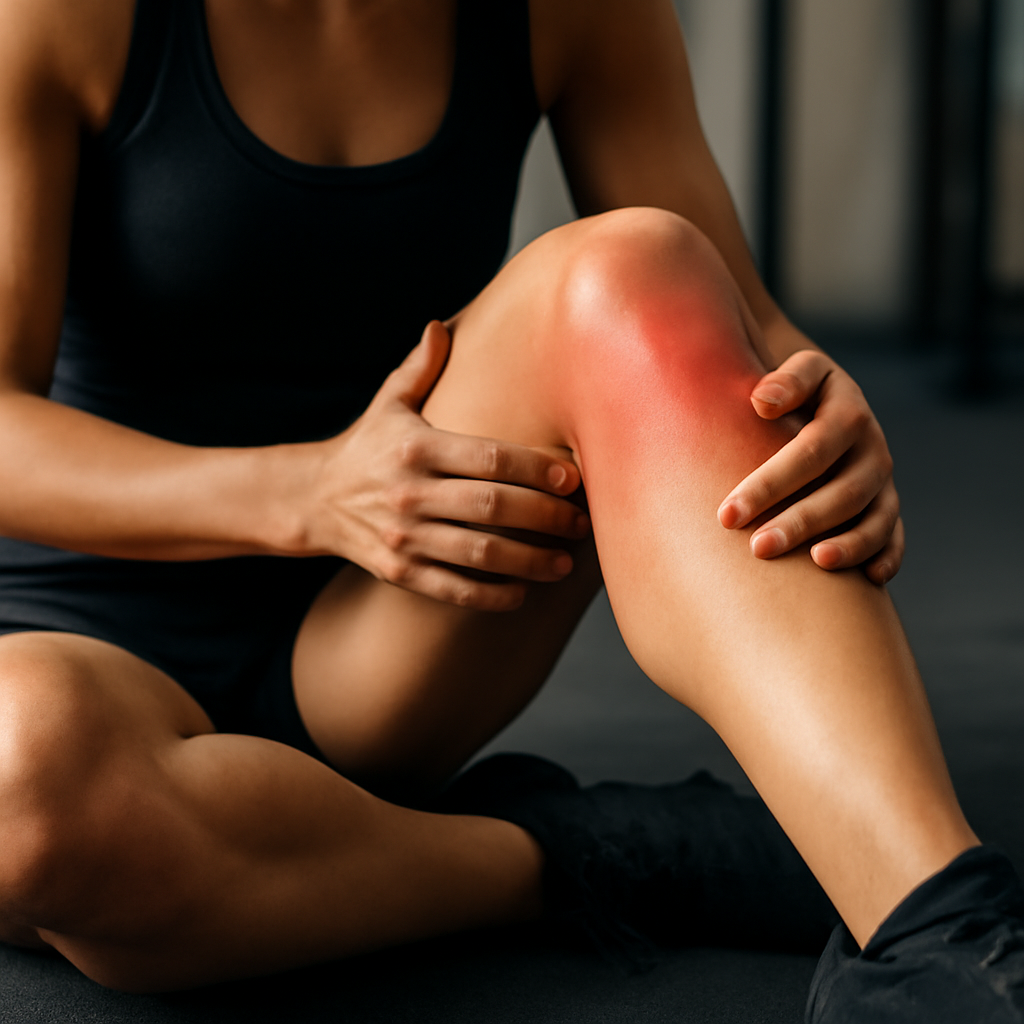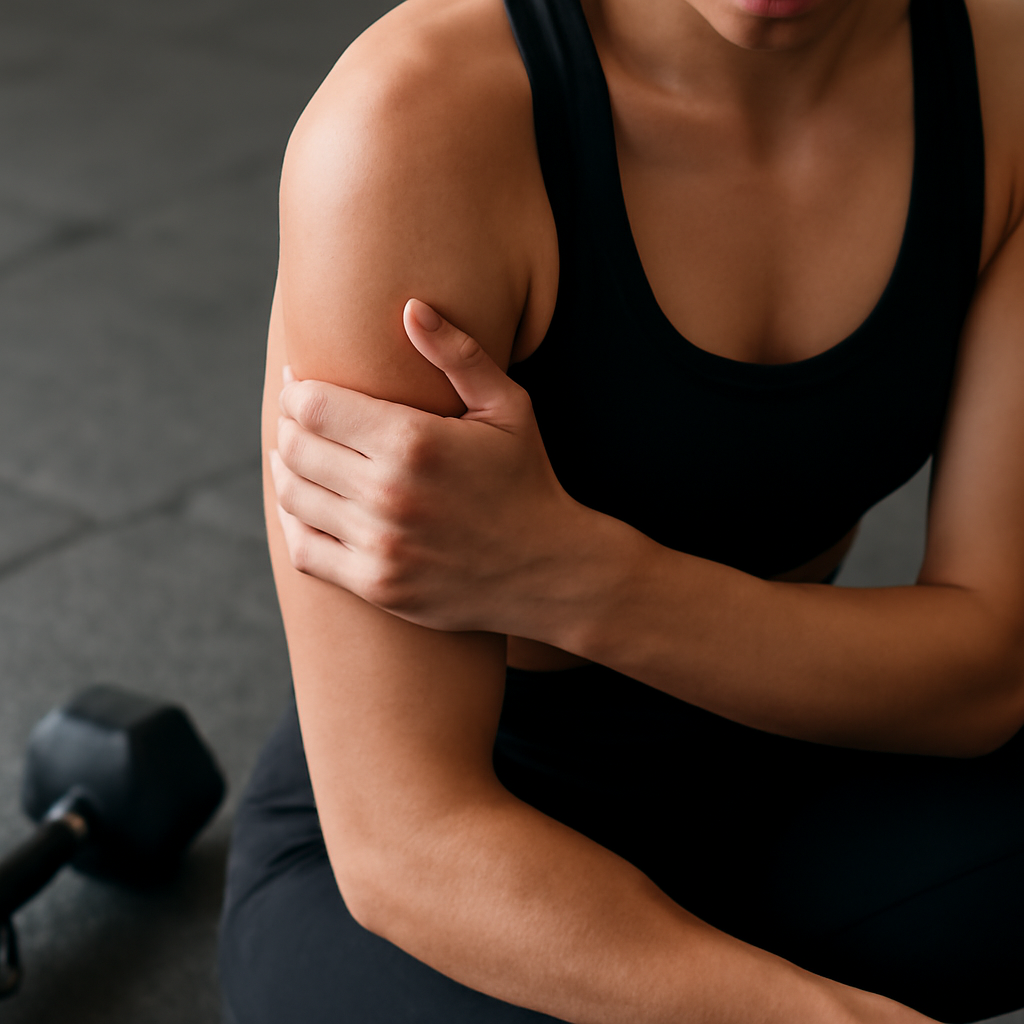How to Relieve Soreness of Muscles After Workout: A Step-by-Step Topical Treatment Checklist
That deep, achy soreness of muscles after workout can make stairs feel like a summit and turning your head a mini challenge. While some discomfort is expected as your body adapts, you can calm those signals quickly with a smart, skin-first plan. This guide teaches you how to use topical care strategically, so you feel looser, move better, and protect long-term performance. Along the way, you will see how Neuropasil’s fast-acting, natural formula helps ease nerve pain and muscle pain without slowing your routine. Ready to bounce back faster and with more confidence?
Soreness of Muscles After Workout: What Is Happening Inside?
Most post-session aches are tied to DOMS (delayed onset muscle soreness), which usually peaks 24 to 72 hours after new or intense training. Eccentric contractions, like the lowering phase of squats or downhill running, create microscopic muscle fiber stress and minor inflammation. Your nerves relay that stress as stiffness and tenderness, especially when you move or press the area. Mild swelling, reduced range of motion, and a dull, diffuse soreness are classic signs of normal recovery, not injury.
How do you tell soreness from strain? Diffuse discomfort that fades with gentle movement is typically benign, whereas sharp, pinpoint pain, bruising, or swelling that worsens suggests a strain or sprain. Small studies report that up to 80 percent of exercisers experience DOMS (delayed onset muscle soreness) when they start or progress a program, yet only a fraction develop true injuries. Topical strategies help by cooling or warming skin receptors, easing nerve excitability, and supporting microcirculation where you need it most.
Your Step-by-Step Topical Treatment Checklist
Think of topical care like a mini recovery circuit for your skin, nerves, and muscles. You will cleanse, apply the right cream, layer gentle techniques, and reapply based on the clock. This checklist blends sports medicine best practices with real-world routines used by athletes and active people. Use it after strength days, long rides, team practice, or any session that pushes your limits. For consistent results, keep your chosen product near your gym bag or bathroom sink so you never skip the first application window.
- Prep the skin: Rinse sweat and salt with lukewarm water to avoid irritation that can amplify sensitivity.
- First application: Apply a thin, even layer of a menthol-based cream with soothing botanicals to the sore zone.
- Massage lightly: Use small circles for 60 to 90 seconds to promote absorption and ease superficial tightness.
- Stack with movement: Perform 3 to 5 minutes of gentle range-of-motion drills while the cream activates.
- Reapply as directed: Typically every 6 to 8 hours, respecting label guidance and patch-testing sensitive skin.
- Night routine: A final thin layer before bed can reduce sleep disruptions from nighttime aches.
| Step | Timing | How Much to Use | What You Should Feel | Safety Notes |
|---|---|---|---|---|
| Skin Prep | Immediately post-workout | Rinse; no product yet | Clean, calm skin ready for absorption | Avoid very hot water that can increase sensitivity |
| First Application | Within 30 minutes | Pea-sized per palm area | Cooling or mild warmth within 1 to 3 minutes | Patch-test first; keep away from eyes and broken skin |
| Light Massage | Immediately after application | Gentle pressure only | Less stiffness, smoother movement | Stop if sharp pain occurs |
| Reapplication | Every 6 to 8 hours | Thin layer | Renewed comfort, reduced tenderness | Follow label max daily uses |
| Bedtime Layer | Before sleep | Pea-sized per zone | Nighttime relief for deeper rest | Let dry before dressing |
Choosing Ingredients That Work on Nerve and Muscle Pain
The best topical formulas do more than smell minty. Look for ingredients that target nerve signaling, soothe the skin, and support comfortable movement across muscles and surrounding soft tissues. Neuropasil Nerve Pain Relief and Muscle Cream combines menthol for fast sensory relief with aloe and urea for skin hydration and tolerance. This balanced profile matters when you reapply throughout a recovery window or manage recurring nerve pain and tendonitis flare-ups. If you have sensitive skin, these gentler, natural components are often better tolerated than harsh counterirritants alone.
Curious which ingredients do what? Menthol interacts with cold-sensitive TRPM8 (transient receptor potential melastatin 8) receptors, creating a cooling effect that can modulate pain perception. Aloe supports skin barrier comfort and may reduce minor irritation during repeated use. Urea enhances hydration and helps with penetration, which can make each pea-sized amount go further. Together, this trio forms a base that is both effective and skin-kind for athletes, active lifestyles, and those managing sciatica or nerve-related tingling after demanding sessions.
| Ingredient | Primary Action | What It Helps | Evidence Notes | Found in Neuropasil? |
|---|---|---|---|---|
| Menthol | Cooling sensory modulation via TRPM8 (transient receptor potential melastatin 8) | Rapid comfort for muscle pain and localized soreness | Human trials report reduced perceived soreness within minutes | Yes |
| Aloe | Soothing, skin-calming hydration | Improved tolerance for frequent applications | Dermatology studies support skin comfort and barrier support | Yes |
| Urea | Humectant that draws moisture, supports penetration | Even coverage, less dryness over sore zones | Widely used to enhance topical absorption and hydration | Yes |
| Capsaicin | Desensitizes pain fibers with repeated use | Chronic nerve pain hot spots | May sting initially; best for targeted protocols | No |
| Salicylates | Counterirritant, mild anti-inflammatory effect | Localized soft tissue soreness | Avoid if allergic to aspirin or using anticoagulants | No |
Time-Based Recovery: What to Do in the First 0 to 72 Hours

Timing makes your topical routine work harder for you. The first application within 30 minutes takes advantage of a window when nerve endings are most reactive, which helps calm signals early. Subsequent layers maintain comfort while you add gentle movement, protein-rich meals, and hydration. This integrated plan supports blood flow and tissue remodeling as DOMS (delayed onset muscle soreness) resolves naturally. Use the timeline below to stay consistent and avoid guesswork.
| Window | Topical Actions | Movement & Care | Nutrition & Sleep |
|---|---|---|---|
| 0 to 2 hours | Cleanse skin; first application; light massage | Gentle mobility: 3 to 5 minutes per sore area | Protein plus carbs within 60 minutes; hydrate |
| 2 to 24 hours | Reapply every 6 to 8 hours as needed | Short walks, easy cycling, or yoga flows | 2 to 3 liters water daily; magnesium-rich foods |
| 24 to 72 hours | Nighttime layer before bed | Return to moderate movement if pain is diffuse | Prioritize 7 to 9 hours sleep; keep meals balanced |
Advanced Tips for Athletes, Active Lifestyles, and Nerve-Sensitive Conditions
High performers and active parents alike benefit from stacking low-friction strategies. After applying your cream, add a five-minute heat or cool session depending on preference, then cycle through range-of-motion drills for hips, shoulders, or spine. For nerve-sensitive issues like sciatica, place a thin layer along the referral pathway, not only the back or hip, to calm superficial nerve signaling. Individuals with tendonitis may focus around but not directly on the tendon midpoint, where compression can be uncomfortable.
Consider your training week. On heavy days, pre-apply a very thin layer 20 minutes before warm-up to reduce perceived stiffness, then follow the full post-workout checklist. On deload weeks, you may only need the evening application to preserve sleep quality. Many athletes report that consistent topical routines reduce the need for oral NSAIDs (nonsteroidal anti-inflammatory drugs), an advantage if you aim to minimize systemic side effects. If your skin is sensitive, start with once daily for two days, then increase to every 6 to 8 hours as tolerated.
- Foam roll gently after application to leverage reduced guarding and improve glide.
- Target common hot spots: calves for runners, forearms for lifters, glutes for cyclists.
- Pair with RICE (rest, ice, compression, elevation) in the first 24 hours for minor strains.
- Log what works. Noting time, dose, and relief helps refine your plan across training cycles.
When Soreness Signals Something Else and How to Prevent It Next Time
Topical care is powerful for routine recovery, yet certain symptoms deserve attention. Red flags include severe swelling, visible deformity, inability to bear weight, numbness, or pain that intensifies over 48 hours. If you have these, consult a qualified clinician. Likewise, recurring nerve pain that shoots, burns, or causes foot drop needs professional evaluation. For most people, though, soreness fades with consistent care, thoughtful loading, and better pacing as your tissues adapt to new demands.
Prevention starts before you lift or run. Warm up with dynamic moves targeting the exact joints you will load, progress volume by 10 percent per week, and vary eccentric work. After training, follow your topical checklist and add short mobility snacks throughout the day. Neuropasil supports this repeatable approach by offering expert-backed articles on pain relief and a balanced, natural formula you can reapply without harshness. Keep an eye out for Special discount offers like SALE30 that make it easier to stock your gym bag and home kit.
How Neuropasil Fits Your Recovery Strategy

Neuropasil is designed for people who refuse to accept that soreness has to derail a day of work, play with kids, or tomorrow’s training. Its fast-acting pain relief formula uses a natural trio, including aloe, urea, and menthol, to calm nerve pain and ease muscle pain. Because the texture spreads thinly and absorbs quickly, you can cover quads, hamstrings, calves, or forearms with a pea-sized amount per palm area. Many users describe a cooling wave within minutes, followed by easier movement and fewer sleep disruptions on heavy days.
As an authority on recurring nerve and muscle pain, Neuropasil publishes expert insights you can apply immediately, from mobility sequences to evidence-based dosing schedules. The product’s targeted, fast-acting relief helps you stick to your plan and reclaim daily comfort. Whether you are ramping up for a race, returning from a sports injury, or managing a busy, active lifestyle, the same step-by-step topical checklist keeps soreness predictable and progress steady.
Frequently Asked Questions About Post-Workout Topical Relief
How often should I apply a cream for soreness? Most labels recommend every 6 to 8 hours, not exceeding the daily maximum. Can I combine with oral NSAIDs (nonsteroidal anti-inflammatory drugs)? Many do, but discuss with a clinician if you have stomach, kidney, or cardiovascular concerns. What if my skin is reactive? Patch-test a pea-sized amount on the forearm for 24 hours before broader use. Will topicals help sciatica? They can calm superficial nerve sensitivity and muscle guarding along the pathway; pair with mobility and professional care if symptoms persist.
Should I rest when sore? Gentle movement often helps diffuse soreness, while sharp, localized pain requires caution. Is heat or ice better? Preference matters. Try 5 to 10 minutes after application and pick what leaves you feeling looser. Finally, when in doubt, follow the checklist and stay consistent; recovery is a habit, not a hope.
Final Thoughts That Keep You Moving
With a precise, skin-first checklist, you can relieve soreness quickly and move into your next session with confidence.
Imagine the next 12 months where soreness is a signal you manage, not a roadblock you fear, thanks to smarter timing, natural ingredients, and repeatable steps. Which small change will you try today to ease the soreness of muscles after workout?
Additional Resources
Explore these authoritative resources to dive deeper into soreness of muscles after workout.
Recover Faster With Neuropasil
Use code SALE30 for targeted, fast-acting relief that helps athletes and active people calm nerve pain, muscle aches, sciatica, tendonitis, and post-workout soreness.
Relieve Soreness Now













